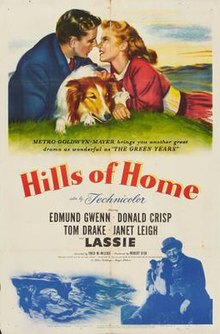
Lassie Come Home is a 1943 Metro-Goldwyn-Mayer Technicolor feature film starring Roddy McDowall and canine actor Pal, in a story about the profound bond between Yorkshire boy Joe Carraclough and his rough collie, Lassie. The film was directed by Fred M. Wilcox from a screenplay by Hugo Butler based upon the 1940 novel Lassie Come-Home by Eric Knight. The film was the first in a series of seven MGM films starring "Lassie."
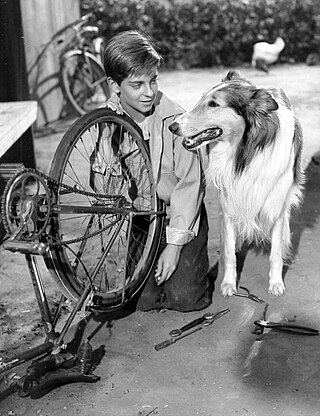
Lassie is a fictional female Rough Collie dog and is featured in a 1938 short story by Eric Knight that was later expanded to a 1940 full-length novel, Lassie Come-Home. Knight's portrayal of Lassie bears some features in common with another fictional female collie of the same name, featured in the British writer Elizabeth Gaskell's 1859 short story "The Half Brothers". In "The Half Brothers", Lassie is loved only by her young master and guides the adults back to where two boys are lost in a snowstorm.

Donald William Crisp was an English film actor as well as an early producer, director and screenwriter. His career lasted from the early silent film era into the 1960s. He won an Academy Award for Best Supporting Actor in 1942 for his performance in How Green Was My Valley.
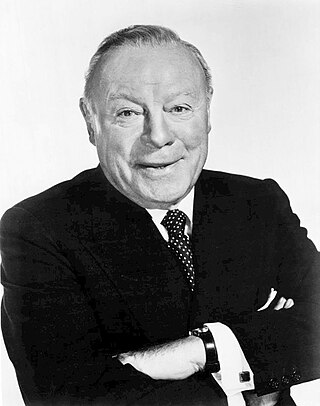
Edmund Gwenn was an English actor. On film, he is best remembered for his role as Kris Kringle in the Christmas film Miracle on 34th Street (1947), for which he won the Academy Award for Best Supporting Actor and the corresponding Golden Globe Award. He received a second Golden Globe and another Academy Award nomination for the comedy film Mister 880 (1950). He is also remembered for his appearances in four films directed by Alfred Hitchcock.

Tom Drake was an American actor. Drake made films starting in 1940 and continuing until the mid-1970s, and also made TV acting appearances.

Hugo Wilhelm Friedhofer was an American composer and cellist best known for his motion picture scores.
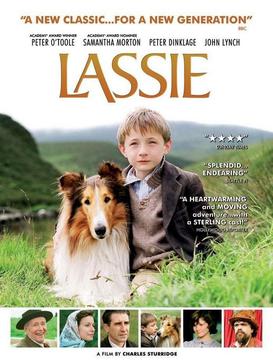
Lassie is a 2005 adventure comedy-drama film based on Eric Knight's 1940 novel Lassie Come-Home about the profound bond between Joe Carraclough and his rough collie, Lassie. The film was directed, written, and co-produced by Charles Sturridge and is a production of Samuel Goldwyn Films. The film stars Jonathan Mason and was distributed by Roadside Attractions and released in the UK on 16 December 2005. Filming took place in Scotland, Ireland and the Isle of Man. The supporting cast features Peter O'Toole, Samantha Morton, Peter Dinklage, Edward Fox, and John Lynch. The film was generally reviewed positively by critics, but performed poorly at the box office.

Maytime is a 1937 American musical and romantic-drama film produced by MGM. It was directed by Robert Z. Leonard, and stars Jeanette MacDonald and Nelson Eddy. The screenplay was rewritten from the book for Sigmund Romberg's 1917 operetta Maytime by Rida Johnson Young, Romberg's librettist; however, only one musical number by Romberg was retained.

Son of Lassie is a 1945 American Technicolor feature film produced by MGM based on characters created by Eric Knight, and starring Peter Lawford, Donald Crisp, June Lockhart and Pal. A sequel to Lassie Come Home (1943), the film focuses on the now adult Joe Carraclough after he joins the Royal Air Force during World War II and is shot down over Nazi-occupied Norway along with a stowaway, Lassie's son "Laddie" – played by Pal. Son of Lassie was released theatrically on April 20, 1945, by Loew's.
The 20th Academy Awards were held on March 20, 1948, to honor the films of 1947. It is notable for being the last Oscars until 2005 in which no film won more than three awards.

The Sun Comes Up is a 1949 Metro-Goldwyn-Mayer Technicolor picture with Lassie. Jeanette MacDonald had been off the screen for five years until her return in Three Daring Daughters (1948), but The Sun Comes Up was to be her last. In it, she had to share the screen not with an up-and-coming younger actress but with a very popular animal star. Although her retreat from a film career can be blamed largely on an increasingly debilitating heart ailment, MacDonald continued to make concert and TV appearances after this. Her last radio performance was a broadcast version of this same story on The Screen Guild Theater in March 1950.
Herbert Pope Stothart was an American songwriter, arranger, conductor, and composer. He was nominated for twelve Academy Awards and won Best Original Score for The Wizard of Oz. Stothart was widely acknowledged as a prominent member of the top tier of Hollywood composers during the 1930s and 1940s.
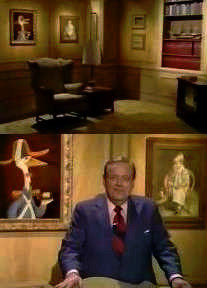
Family Classics is a Chicago television series which began in 1962 when Frazier Thomas was added to another program at WGN-TV. Thomas not only hosted classic films, but also selected the titles and personally edited them to remove those scenes which he thought were not fit for family viewing. After Thomas' death in 1985, Roy Leonard took over the program. The series continued sporadically until its initial cancellation in 2000.

Challenge to Lassie is an American drama directed by Richard Thorpe in Technicolor and released October 31, 1949, by MGM Studios. It was the fifth feature film starring the original Lassie, a collie named Pal, and the fourth and final Lassie film starring Donald Crisp.

The Painted Hills, also known as Lassie's Adventures in the Goldrush, is a 1951 drama western film produced by Metro-Goldwyn-Mayer (MGM) and directed by Harold F. Kress.

Courage of Lassie is a 1946 American Technicolor MGM feature film featuring Elizabeth Taylor, Frank Morgan, and dog actor Pal.

Apartment for Peggy is a 1948 American comedy-drama film directed by George Seaton and starring Jeanne Crain, William Holden, and Edmund Gwenn. The plot is about a depressed professor whose spirits are lifted when he rents part of his home to a young couple. It was based on the novelette An Apartment for Jenny by Faith Baldwin. Campus exteriors were filmed at the University of Nevada, Reno.
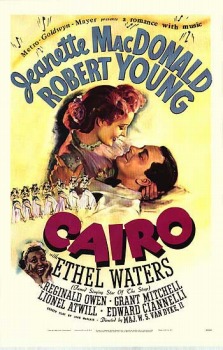
Cairo is a 1942 musical comedy film made by MGM and Loew's, and directed by W. S. Van Dyke. The screenplay was written by John McClain, based on an idea by Ladislas Fodor about a news reporter shipwrecked in a torpedo attack, who teams up with a Hollywood singer and her maid to foil Nazi spies. The music score is by Herbert Stothart. This film was Jeanette MacDonald's last film on her MGM contract.
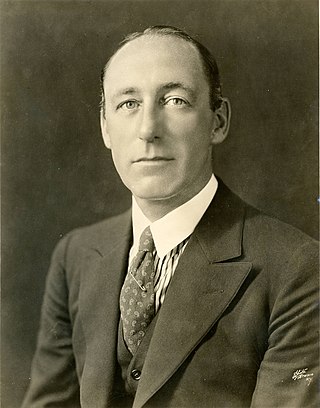
Francis Lumsden Hare was an American film and theatre actor. He was also a theatre director and theatrical producer.
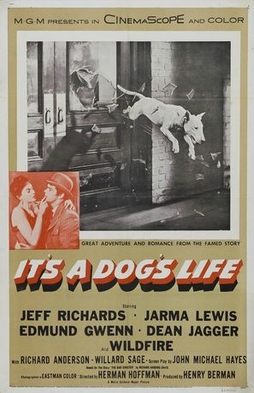
It's a Dog's Life is a 1955 American comedy drama film directed by Herman Hoffman and starring Jeff Richards, Edmund Gwenn and Jarma Lewis. It is adapted from Richard Harding Davis’s 1903 novel The Bar Sinister.
